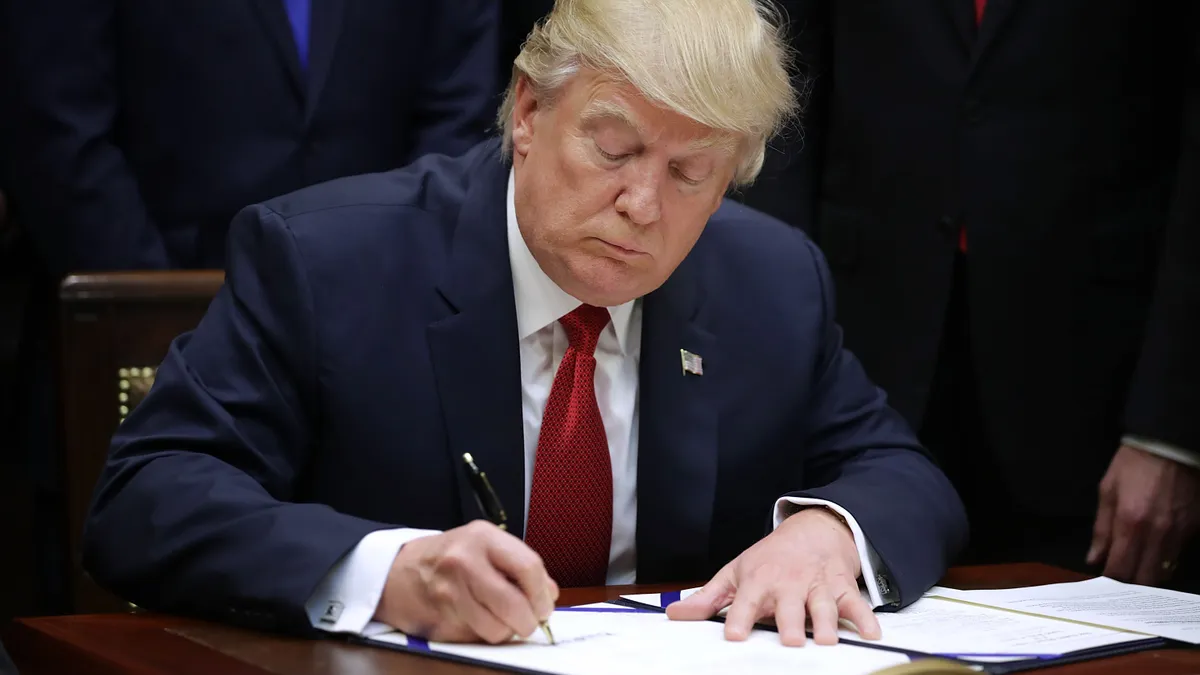Dive Brief:
-
The U.S. government is working to "empower" federal agency CIOs with an executive order signed by President Donald Trump Tuesday. Federal CIOs "generally do not have adequate visibility into, or control over, their agencies' IT resources," which leads to poor execution, delivery of services and overall standing in the cyber domain, according to the order.
-
A federal CIO is entitled to direct communication with the head of an agency while serving as the agency's "primary strategic advisor" for anything pertaining to IT, the order states.
-
The order also prioritizes the modernization of agencies' IT infrastructure, particularly because the majority of the federal government's $90 billion IT budget goes to maintaining legacy systems. Part of this includes the removal of "unnecessary IT management functions," consolidating infrastructure as recommended by the CIO and implementing industry best offerings across agencies and the executive branch.
Dive Insight:
Regardless of the industry, CIOs struggle to have their voices heard among other top officials. But before this executive order, the federal government had adopted a regulation that was meant to give CIOs a megaphone.
The Federal Information Technology Acquisition Reform Act (FITARA) was enacted in December 2014 and effectively gave federal agencies notice of their CIOs' authority.
However, some CIOs "never had much faith" in the law because having influence in an institute is something granted from experience and skills, not necessarily a law. But proponents of the law like Rep. Will Hurd, R-TX, said that frustration often comes down to being able to hold the CIO as well as other leaders accountable for an agency's IT struggles.
Beginning in December, hearings for FITARA scorecard included an agency's CIO and CFO. Forging a relationship between either role can be difficult, but nonetheless is vital to ensure transparency among the hierarchy of an agency or provate-sector company.
However, federal agencies are put to a test compared against FITARA scorecard standards and the results have been alarming. The Government Accountability Office holds agencies accountable for their shortcomings. For example, the last scorecards in November revealed a failing grade for 17 of the 24 agencies in software licensing.
The executive order is meant to ease any additional frustrations a federal CIO could be facing. This is particularly important following the shakeup of federal CIOs last year after many left their positions. The next FITARA scorecard could reveal whether this executive order helped fulfill CIO's full potential and accommodated an agency's shift to the digital age ... or at least an age without floppy disks.












